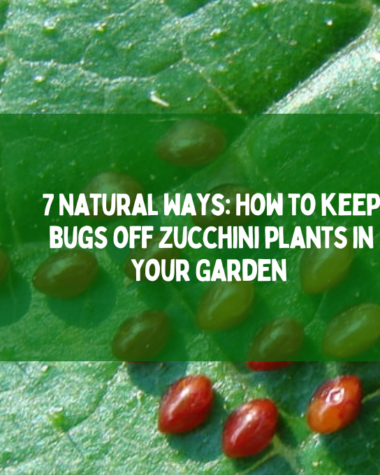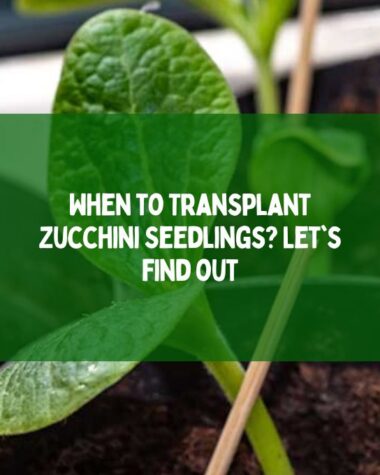Zucchini and tomatoes make excellent companions due to their compatible growth habits, nutrient requirements, and pest-repellent properties. When planted in proximity, they can help maximize space utilization, improve pollination, deter pests, and promote a more productive and diverse garden ecosystem.
By carefully considering factors like sunlight, soil conditions, and proper spacing, you can create an environment where zucchini and tomatoes can thrive harmoniously, leading to a successful and rewarding gardening experience.
In this article, I will explain companion gardening, whether you can plant zucchini and eggplant together, their growing guides, and common pests.
Read on to learn more about this.
Benefits Of Zucchini And Tomatoes Companion Gardening

Companion gardening is the practice of planting different plant species together to maximize their benefits. When it comes to tomatoes and zucchini, companion gardening offers several advantages.
Here are some benefits of companion gardening for tomatoes and zucchini:
1. Pests Control
By interplanting tomatoes and zucchini, you can help deter specific pests that are attracted to either plant. For example, tomatoes can repel aphids and whiteflies, while zucchini can discourage cucumber beetles and squash bugs.
2. Increased pollination
Both tomatoes and zucchini rely on pollinators, such as bees, to transfer pollen from the male to the female flowers for fruit production. By growing these plants together, you can attract more pollinators to your garden.
3. Space optimization
Companion gardening allows you to make the most of limited garden space. Since tomatoes are tall and require support, you can use stakes or trellises for them. You can grow zucchini, which tends to spread along the ground.
4. Shade and sun protection
Tomatoes can provide beneficial shade for zucchini plants during hot summer days. Zucchini, being a fast-growing plant, can also provide ground cover to shade the soil around tomato plants, helping to conserve moisture and prevent weed growth.
5. Nutrient sharing
Zucchini has a deep root system that can access nutrients deeper in the soil, which benefits shallow-rooted tomatoes. In return, tomatoes release certain chemicals through their roots that can enhance the growth of zucchini and other companion plants.
- Remember to consider the specific requirements of each plant regarding soil, water, and sunlight to ensure they are compatible.
Related Reading
- Can We Grow Zucchini And Eggplant Together?
- 5 Reasons Why Zucchini Leaves Turn Brown
- Should You Salt Zucchini Before Baking? FAQs Based
- When to Transplant Zucchini Seedlings? Let’s find out
Can Zucchini And Tomatoes Grow Together?
Yes, zucchini and tomatoes can grow together and are often suitable companions in the garden. When planted together, they can benefit each other in several ways.
- Firstly, zucchini and tomatoes have similar sun and soil requirements. They both thrive in full sunlight, 6–8 hours per day, and well-drained soil rich in organic matter. This makes it easier to create a suitable growing environment for both plants in close proximity.
- Secondly, zucchini plants tend to spread along the ground, while tomatoes often require staking or trellising for support. This difference in growth habit allows for efficient use of space.
- Furthermore, zucchini and tomatoes can provide mutual pest protection. Zucchini leaves have a strong aroma that repels certain pests, while tomatoes can deter pests like aphids and whiteflies.
- Lastly, companion planting of zucchini and tomatoes can enhance pollination. Both plants rely on insects, especially bees, for pollination. Planting them close to each other can attract more pollinators, leading to better fruit and higher yields.
Best Practices For Growing Zucchini And Tomatoes Together

Zucchini and tomatoes are popular vegetables to grow in home gardens, and when planted together, they can mutually benefit each other.
Here’s a guide to successfully growing zucchini and tomatoes together:
1. Choosing A Suitable Location
Select a sunny spot in your garden that receives at least 6–8 hours of direct sunlight each day. Make sure that the soil is well-drained and rich in organic matter. Amend the soil with compost before planting.
2. Timing
Start zucchini and tomato plants indoors from seed. Transplant them outdoors after the last frost date in your region, when the soil has warmed up and the danger of frost has passed.
3. Garden Layout
Allow adequate space between plants to prevent overcrowding and promote good air circulation. Plant zucchini on one side of the garden bed and tomatoes on the other, leaving enough space for each plant’s growth habit.
4. Planting
Dig a hole and place the zucchini and tomato plants into the holes, ensuring they are planted at the same depth as they were in their containers or seedling trays. Gently backfill the soil around the plants and lightly firm the soil to eliminate air pockets.
5. Watering And Mulching
Water the plants thoroughly after planting and maintain consistent moisture throughout the growing season. Water deeply, but avoid overwatering to prevent waterlogged soil.
Apply a layer of organic mulch around the base of the plants to conserve moisture, suppress weed growth, and maintain an even soil temperature.
6. Support For Tomatoes
Depending on the tomato variety, provide support such as stakes, cages, or trellises to help the plants grow upright and prevent sprawling. Install the supports at the time of planting or shortly after to avoid damaging the plant’s roots.
7. Maintenance
- Regularly monitor the garden for pests and diseases. Take appropriate pest control measures, such as handpicking pests, using organic insecticides, or introducing beneficial insects.
- Remove any damaged or diseased leaves or fruits to prevent the spread of diseases.
- Fertilize the plants as needed with a balanced organic fertilizer.
By following these guidelines, you can grow zucchini and tomatoes together successfully.
Tips For Successful Zucchini And Tomatoes Harvest

Growing zucchini and tomatoes together can provide you with a bountiful harvest and a satisfying gardening experience. Here are some tips for a successful harvest of zucchini and tomatoes:
1. Regular Monitoring
Keep a close eye on your plants. Check for signs of ripening and monitor the health of the foliage and fruits regularly. Early detection of any issues can help prevent further damage and ensure a better harvest.
- Harvest zucchini when they are still young and tender. Aim for a length of around 6-8 inches.
- Use a sharp knife or pruners to cut the zucchini from the stem, leaving a short stem attached.
- Harvest tomatoes when they reach their desired ripeness and color. The color will vary depending on the tomato variety.
- Gently twist or cut the tomatoes off the vine to avoid damaging the plant. Leave a small portion of the stem attached to the tomato.
- If you need to harvest tomatoes before they are fully ripe, place them in a warm area to allow them to fully ripen.
2. Harvesting Frequency
Check your zucchini and tomato plants every couple of days, especially during peak harvesting season. Both crops can mature quickly, and regular harvesting ensures you don’t miss the ideal harvest window.
3. Storage
Store tomatoes at room temperature away from direct sunlight until they reach their desired ripeness. Once ripe, you can refrigerate them to prolong their shelf life.
4. Post-harvest care
After harvesting, remove any fallen or decaying fruits or foliage from the garden bed to minimize the risk of pests and diseases. If you plan to continue growing zucchini or tomatoes, save the seeds from your healthiest and tastiest fruits for future planting.
Remember, the key to a successful harvest is to be attentive, harvest at the right time, and handle the produce gently to avoid damage.
Common Pests For Zucchini And Tomato Plants

Zucchini and tomato plants can be susceptible to various pests.
Here are some common pests that may affect these plants:
- Aphids: These small, soft-bodied insects can cluster on the undersides of leaves and suck sap from the plants, causing stunted growth and distorted leaves. They can be green, black, brown, or yellow.
- Whiteflies: These tiny, white, moth-like insects on leaves and feed on plant sap. They can cause yellowing, wilting, and leaf drop. They also excrete honeydew, which attracts ants and can promote the growth of sooty mold.
- Cucumber beetles: Both striped cucumber beetles and spotted cucumber beetles can feed on zucchini and tomato plants. They chew on leaves, flowers, and fruits, and can transmit bacterial wilt disease.
- Squash bugs: These brownish-gray insects feed on the leaves, stems, and fruits of zucchini plants. Their feeding can cause wilting, browning, and stunting. They also lay their eggs on the undersides of leaves in clusters.
- Tomato hornworms: These large, green caterpillars can blend in with the foliage and eat tomato leaves and fruits. Their feeding can cause significant damage to the plants.
- Cutworms: These caterpillars hide in the soil and emerge at night to feed on the stems of young zucchini and tomato plants, cutting them off at ground level. This can result in plant wilting and death.
- Spider mites: These tiny, sap-sucking pests are difficult to see without magnification. They often appear as tiny dots and can cause yellowing, stippling, and webbing on the leaves. Spider mites thrive in hot and dry conditions.
Related Reading
- White Shades Of Eggplant: Exploring the Versatility of White Eggplant
- Why Cats Are Afraid of Cucumbers? The Surprising Truth Revealed!
- How To Make Pumpkins Grow Faster?
- What Is the Best Time to Plant Carrots?
Final Thoughts
Growing zucchini and tomatoes together can be a mutually beneficial and rewarding practice. By implementing proper spacing, providing ample sunlight, and maintaining optimal soil conditions, you can create a beautiful garden bed.
The combination of these two plants can maximize space utilization, improve pollination, deter pests, and share nutrients. Regular monitoring, timely harvesting, and careful pest management are key to a successful harvest.
Remember to enjoy the process, experiment, and adapt your approach based on your observations.
Thanks for reading!







